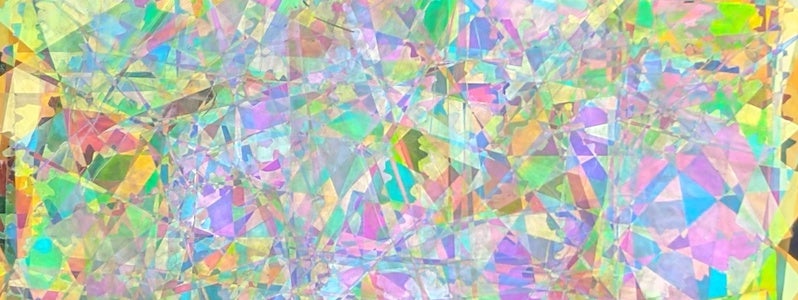
What is light polarization?
Light carries energy as an electromagnetic wave, which can wiggle up-and-down, side-to-side, or anywhere in between. The direction the wave is called its polarization.
Polarizing filters can be used to block light depending on its polarization. They are used in LCD monitors to control which pixels we see and in polarized sunglasses to reduce road glare.
Many clear plastics rotate the polarization of the light that passes through them. The amount of rotation depends on both the thickness of the plastic and the colour of the light.
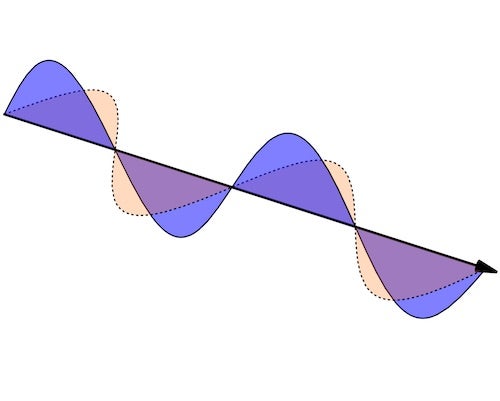
Activity: Polarization art
Materials
You will need:
- an LCD monitor
- a pair of polarizing sunglasses
- clear tape
- scissors
- a clear surface (e.g., cling wrap, CD case)
Steps
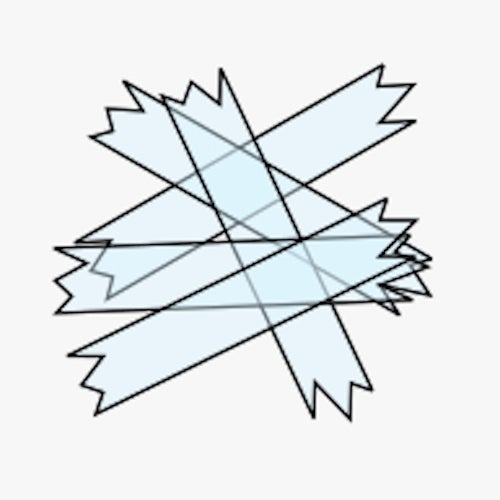
1. Place many overlapping strips of tape onto the clear surface.

2. Secure the clear surface onto the monitor.
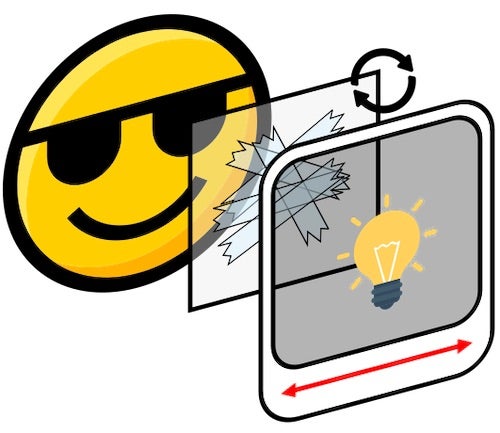
3. View the monitor through the sunglasses. See what happens when you rotate the taped surface.
What happened?
When you looked at your monitor through your sunglasses, you likely saw that it was completely blacked out. As you rotated your head, the image re-appeared again. This is because the light that comes out of an LCD monitor is polarized, most often horizontally. This means the light wave wiggles side-to-side. Polarizing sunglasses absorb light depending on the polarization. Most commonly, they absorb all horizontally polarized light and let all vertically polarized (up-and-down) light pass through. If the LCD monitor emits horizontal light and the sunglasses absorb all of it, theres no more light to see.
Many plastics respond to polarization in a different way than the sunglasses. Rather than absorbing light, the plastics actually rotate the light. This property is called birefringence. By layering the tape, we can increase the amount of rotation. This effect is used to test for stress points in certain materials and when studying mixtures of minerals.
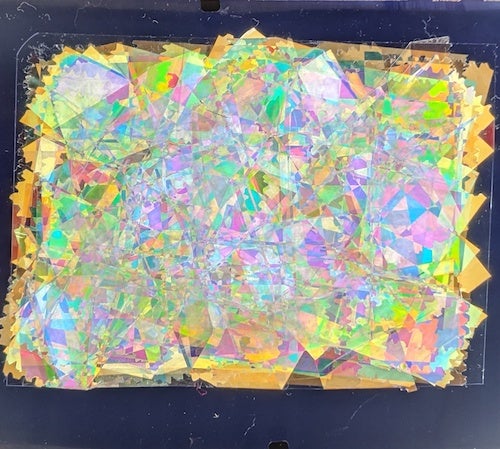
Follow-up activities
- Can you use this effect to test if other materials are birefringent?
- Can you make a hypothesis for why different colours appear depending on the thickness of the tape?
Quantum connection
The polarization of light can be used to encode quantum information. Light is made up of indivisible particles called photons. Quantum researchers can create photons one-at-a-time and encode quantum bits of information into their polarization. By sending polarization-encoded photons from one person to another, we can build secure quantum networks. Labs studying quantum light can even entangle the polarizations of many photons.